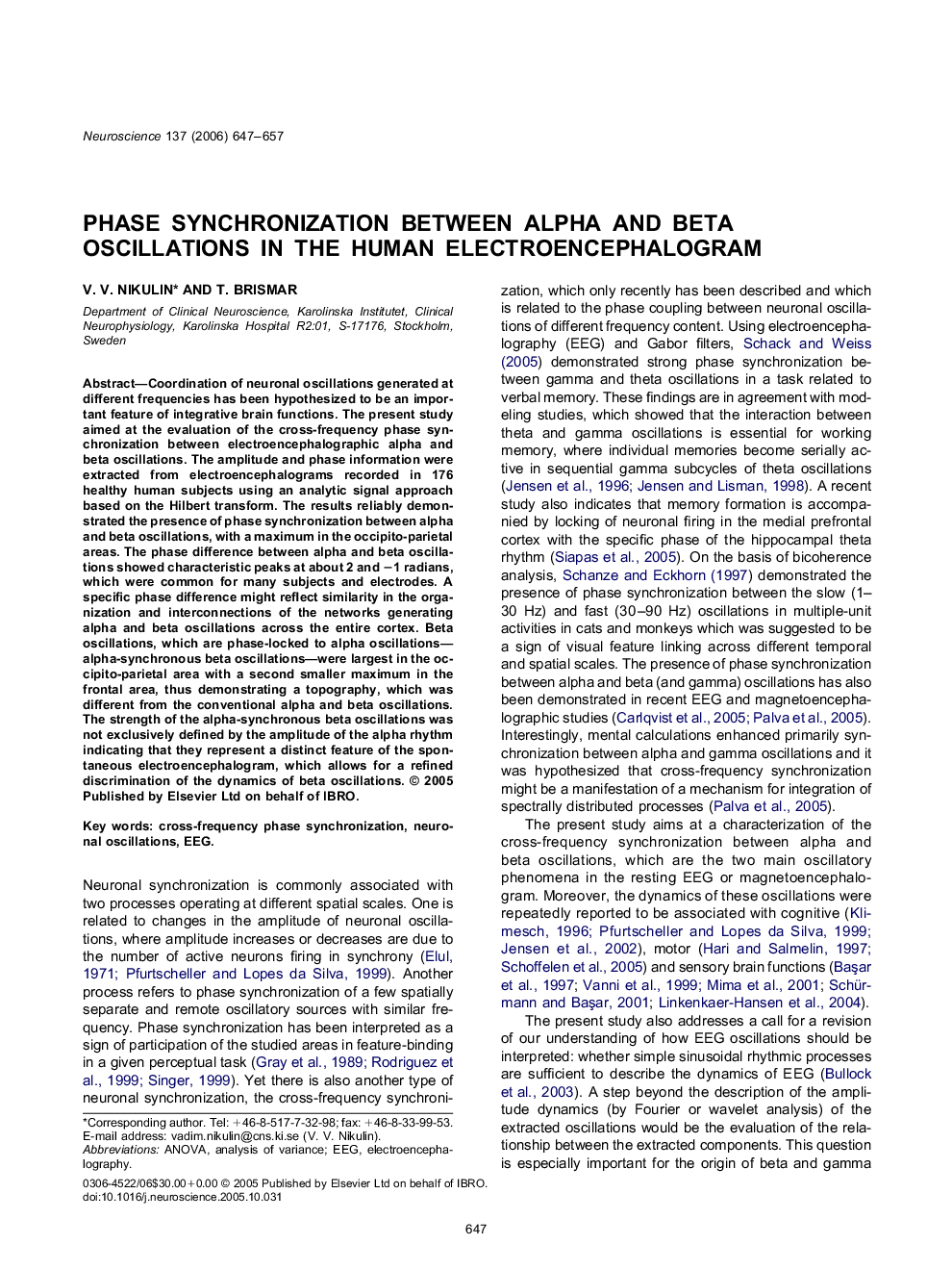| Article ID | Journal | Published Year | Pages | File Type |
|---|---|---|---|---|
| 4342860 | Neuroscience | 2006 | 11 Pages |
Coordination of neuronal oscillations generated at different frequencies has been hypothesized to be an important feature of integrative brain functions. The present study aimed at the evaluation of the cross-frequency phase synchronization between electroencephalographic alpha and beta oscillations. The amplitude and phase information were extracted from electroencephalograms recorded in 176 healthy human subjects using an analytic signal approach based on the Hilbert transform. The results reliably demonstrated the presence of phase synchronization between alpha and beta oscillations, with a maximum in the occipito-parietal areas. The phase difference between alpha and beta oscillations showed characteristic peaks at about 2 and −1 radians, which were common for many subjects and electrodes. A specific phase difference might reflect similarity in the organization and interconnections of the networks generating alpha and beta oscillations across the entire cortex. Beta oscillations, which are phase-locked to alpha oscillations—alpha-synchronous beta oscillations—were largest in the occipito-parietal area with a second smaller maximum in the frontal area, thus demonstrating a topography, which was different from the conventional alpha and beta oscillations. The strength of the alpha-synchronous beta oscillations was not exclusively defined by the amplitude of the alpha rhythm indicating that they represent a distinct feature of the spontaneous electroencephalogram, which allows for a refined discrimination of the dynamics of beta oscillations.
